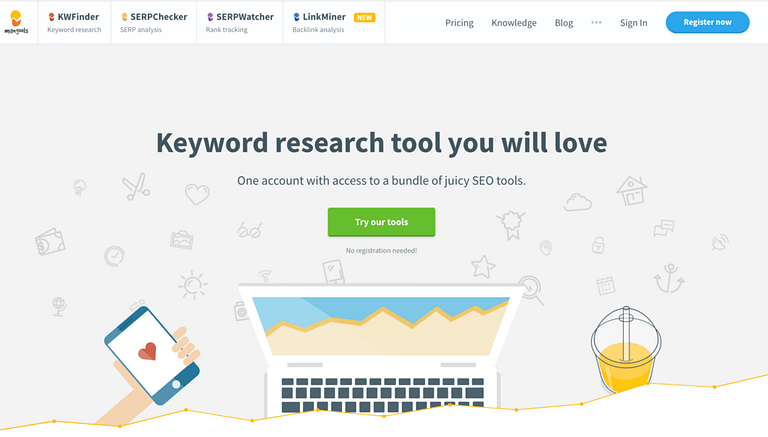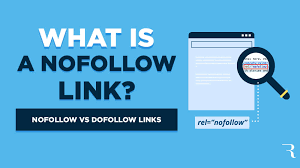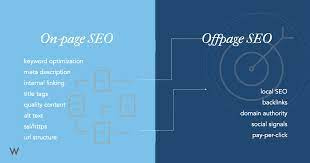Optimizing Your Website for Search Engines: SEO Tips and Tricks for E-commerce
Optimizing Your Website for Search Engines: SEO Tips and Tricks for E-commerce – Welcome to our guide on optimizing your e-commerce website for search engines! As an e-commerce business owner, you understand the importance of having a strong online presence in order to drive sales and attract new customers. One of the most effective ways to do this is through search engine optimization (SEO).
SEO is the process of improving the visibility of your website in search engine results pages (SERPs) through various tactics and strategies. By optimizing your website for search engines, you can increase your website’s visibility and drive more traffic to your site, which can ultimately lead to more sales.
In this article, we will cover the most important aspects of SEO for e-commerce websites and provide you with tips and tricks to help you improve your website’s search engine rankings. We will cover topics such as keyword research, on-page optimization, technical SEO, link building, and measuring and analyzing your results.
By the end of this article, you will have a solid understanding of how to improve your website’s visibility in search engines and drive more traffic and sales to your e-commerce site. So, let’s get started!

Keyword Research
Keyword research is the foundation of any successful SEO strategy. It is the process of identifying the words and phrases that potential customers use to search for products or services like yours. By understanding what keywords your target audience is searching for, you can optimize your website to rank for those terms, driving more targeted traffic to your site.
Why is keyword research important?
- It helps you understand the language your target audience is using to search for products or services like yours
- It allows you to identify the most relevant keywords to target for your website
- It helps you identify new opportunities for content and product creation
Tips for finding the right keywords for your website:
- Start with brainstorming. Make a list of all the words and phrases that are relevant to your business, including product names and industry terms.
- Use Google’s autosuggest feature. Start typing a relevant term into the Google search bar and see what suggestions pop up. These are the terms that other people are searching for, and they can give you a good idea of what keywords to target.
- Look at your competitors. See what keywords your competitors are ranking for and consider targeting similar terms.
- Use keyword research tools. There are a number of free and paid keyword research tools available, such as Google Keyword Planner, Ahrefs, SEMrush, and Keywords Everywhere, which can help you identify the best keywords to target.
Tools and resources for keyword research:
- Google Keyword Planner: A free tool provided by Google that allows you to research keywords and get data on their search volume, competition, and CPC.
- Ahrefs: A paid tool that provides detailed data on keyword research, including search volume, CPC, and keyword difficulty.
- SEMrush: A paid tool that provides data on keywords, including search volume, CPC, and keyword difficulty, as well as competitor analysis.
- Keywords Everywhere: A browser extension that provides search volume and CPC data for keywords on multiple websites.
By understanding your target audience’s search behavior, you will be able to optimize your website to rank for the keywords that are most relevant to your business. This will ultimately drive more targeted traffic to your site, and it’s the first step to a successful SEO strategy.
On-Page Optimization
On-page optimization refers to the techniques used to optimize individual web pages to rank higher and earn more relevant traffic in search engines. It is the process of making sure that your website’s content and structure are search engine friendly.
Why is on-page optimization important?
- It helps search engines understand the content and structure of your website
- It improves the user experience by making it easy for them to find the information they are looking for
- It helps to increase the visibility of your website in search engine results pages
Tips for optimizing your website’s content for search engines:
- Use keywords in your content: Use keywords in your headlines, subheadings, and throughout the body of your content to make it clear what your page is about.
- Use alt tags: Alt tags describe the images on your website, which will help search engines understand the context of the images.
- Create high-quality content: Make sure your content is well-written, informative and engaging for your audience.
- Use schema markups: Schema markups are a way of providing more information about your website to search engines, which can help your pages rank higher.
Best practices for meta tags and header tags:
- Title tags: The title tag is the clickable headline for a webpage that appears in the search engine results pages. Make sure it’s relevant and contains your target keyword.
- Meta descriptions: The meta description is a summary of the content of the webpage that appears under the title tag in the search engine results pages. Keep it concise and compelling.
- Header tags (H1-H6): These tags are used to organize the content on your webpage and help search engines understand the structure of the page. Use H1 for the main title and H2-H6 for subheadings.
Importance of internal linking and how to do it effectively:
Internal linking refers to the process of linking one page of your website to another page within your website. Internal linking helps search engines understand the structure of your website and the relationships between the pages. It also helps to keep users on your website longer, which can improve the overall user experience.
When internal linking, make sure to:
- Use descriptive and relevant anchor text
- Link to relevant pages
- Use a reasonable number of links per page
- Use a mix of follow and no-follow links
On-page optimization is an essential part of SEO, and it’s crucial that you get it right. By optimizing your website’s content and structure for search engines, you’ll be able to increase your visibility in search engine results pages, which will ultimately drive more targeted traffic to your site.
Technical SEO
Technical SEO refers to the process of optimizing the underlying technical aspects of your website to improve its visibility in search engine results pages (SERPs). This includes optimizing website speed, mobile optimization, website structure, and website security.
Why is technical SEO important?
- It helps search engines to crawl and index your website more easily
- It improves the user experience by making your website faster and more mobile-friendly
- It helps to protect your website from security threats
Tips for improving website speed:
- Optimize images: Reduce the size of images on your website to improve loading times.
- Use a Content Delivery Network (CDN): A CDN helps to distribute your content across multiple servers, which can improve website speed for users located in different geographic regions.
- Minimize redirects: Redirects can slow down your website, so try to minimize the number of redirects you use.
Tips for mobile optimization:
- Use a mobile-responsive design: A mobile-responsive design automatically adjusts the layout of your website to fit the screen of the device being used.
- Optimize images for mobile: Make sure your images are optimized for mobile devices to improve loading times.
- Use Google’s Mobile-Friendly Test tool: This tool analyzes your website and provides recommendations on how to improve mobile optimization.
Importance of website structure and how to make it search engine friendly:
A well-structured website makes it easy for search engines to understand the content and hierarchy of your pages. It also helps to improve the user experience. To make your website structure more search engine friendly, you can:
- Use a logical hierarchy for your pages: Use header tags (H1-H6) to organize your content and make it clear which pages are most important.
- Use a sitemap: A sitemap is a file that lists all the pages on your website, which makes it easier for search engines to find and crawl your pages.
Tips for improving website security and dealing with 404 errors:
- Use HTTPS: HTTPS encrypts the data being transmitted between your website and the user’s browser, which helps to protect against security threats.
- Use a web application firewall (WAF): A WAF helps to protect your website from common security threats, such as SQL injection and cross-site scripting (XSS) attacks.
- Deal with 404 errors: A 404 error occurs when a user tries to access a page that doesn’t exist on your website. Use 301 redirects to redirect users to the correct page or implement a custom 404 error page.
Technical SEO is an important aspect of SEO, and it’s crucial that you get it right. By optimizing the underlying technical aspects of your website, you’ll be able to improve its visibility in search engine results pages, which will ultimately drive more targeted traffic to your site.
Link Building
Link building is the process of acquiring links from other websites that point to your website. These links are also known as backlinks, and they are one of the most important ranking factors used by search engines to determine the authority and relevance of your website.
Why is link building important?
- It helps search engines understand the popularity and authority of your website
- It can drive more targeted traffic to your website
- It can improve your search engine rankings
Tips for building high-quality backlinks:
- Create high-quality content: High-quality content is more likely to be shared and linked to by other websites.
- Reach out to other websites: Contact other websites in your niche and ask if they would be willing to link to your content.
- Guest post on other websites: Write a guest post for a website in your niche and include a link back to your own website.
- Use social media: Share your content on social media and ask others to share it as well.
Tools and resources for link building:
- Ahrefs: A paid tool that provides data on backlinks, including the number of backlinks, the quality of the linking website and more
- SEMrush: A paid tool that provides data on backlinks, including the number of backlinks, the quality of the linking website and more
- Majestic: A paid tool that provides data on backlinks, including the number of backlinks, the quality of the linking website and more
Link building is an important aspect of SEO, and it’s crucial that you get it right. By acquiring high-quality backlinks from other websites, you’ll be able to improve your search engine rankings, which will ultimately drive more targeted traffic to your site. It’s important to remember that quality is more important than quantity when it comes to backlinks, focus on building authoritative and relevant links rather than a large number of links from low-quality sources.
Measuring and Analyzing Your Results
Measuring and analyzing your results is an important part of any SEO strategy. It allows you to understand the impact of your efforts and make data-driven decisions to improve your performance.
Why is it important to track and analyze your SEO efforts?
- It allows you to understand the impact of your SEO efforts
- It helps you identify areas of improvement
- It helps you make data-driven decisions
Tips for using analytics to measure your website’s performance:
- Use Google Analytics: Google Analytics is a free tool that provides detailed data on website traffic, including the number of visitors, the pages they visit, and the sources of the traffic.
- Track your rankings: Use a tool like Ahrefs, SEMrush, or Moz to track your search engine rankings for specific keywords.
- Monitor your backlinks: Use a tool like Ahrefs, SEMrush, or Majestic to monitor the number and quality of the backlinks pointing to your website.
Tools and resources for tracking and analyzing your website’s SEO:
- Google Analytics: A free tool that provides detailed data on website traffic, including the number of visitors, the pages they visit, and the sources of the traffic.
- Ahrefs: A paid tool that provides data on search engine rankings, backlinks, and keyword research.
- SEMrush: A paid tool that provides data on search engine rankings, backlinks, and keyword research.
- Moz: A paid tool that provides data on search engine rankings and backlinks.
Measuring and analyzing your results is an important aspect of SEO, and it’s crucial that you do it regularly. By tracking and analyzing your website’s performance, you’ll be able to understand the impact of your SEO efforts, identify areas of improvement, and make data-driven decisions to improve your website’s search engine rankings.
It’s important to set clear goals and objectives for your SEO efforts and track your progress towards achieving those goals. For example, if your goal is to increase organic traffic to your website, you should track metrics like the number of organic visitors, the bounce rate, and the average time spent on your website. If your goal is to improve your search engine rankings, you should track your rankings for specific keywords.
In addition to tracking and analyzing your website’s performance, it’s also important to monitor your competition. Use tools like SEMrush, Ahrefs, and Moz to analyze your competitors’ backlinks, search engine rankings, and keyword research. This information can help you identify opportunities and areas where you can improve your own SEO efforts.
Another important aspect of measuring and analyzing your results is testing. Conducting A/B testing or multivariate testing on your website can help you understand what works and what doesn’t. It can help you to identify which elements of your website are impacting user engagement, conversion rates, and organic search traffic.
Lastly, it’s important to note that SEO is a long-term strategy, and the results of your efforts may not be immediately visible. It takes time for search engines to crawl and index your website, and it takes time for your website to climb the search engine rankings. Be patient and consistent with your efforts, and you will see the results over time.
In conclusion, measuring and analyzing your results is an important aspect of SEO, and it’s crucial that you do it regularly. By setting clear goals and objectives, tracking your progress, monitoring your competition, conducting testing, and being patient, you’ll be able to understand the impact of your SEO efforts, identify areas of improvement and make data-driven decisions to improve your website’s search engine rankings.
Conclusion
In conclusion, optimizing your e-commerce website for search engines is an essential aspect of driving sales and attracting new customers. By following the tips and tricks discussed in this article, you can improve your website’s visibility in search engine results pages, drive more targeted traffic to your site, and ultimately increase your sales.
We’ve covered the most important aspects of SEO for e-commerce websites, including keyword research, on-page optimization, technical SEO, link building, and measuring and analyzing your results. By following the tips and strategies discussed in this article, you’ll be well on your way to improving your website’s SEO and driving more traffic and sales to your e-commerce site.
In addition, here are some more resources that you can use to improve your website’s SEO:
- Google’s Search Engine Optimization Starter Guide: A comprehensive guide to SEO, provided by Google.
- Moz’s Beginner’s Guide to SEO: A step-by-step guide to SEO, provided by Moz.
- The Art of SEO: A book that provides a comprehensive guide to SEO, written by industry experts Eric Enge, Steve Spencer, and Jessie Stricchiola.
Now that you’ve read this article, it’s time to take action and start implementing the strategies discussed. Remember that SEO is a long-term strategy, and it takes time and consistent effort to see results. But with the right approach and a bit of patience, you’ll be able to improve your website’s visibility in search engine results pages, drive more targeted traffic to your site, and ultimately increase your sales.






